site search
online catalog
PAIR OF EARLY BARRACKS OR CAMP SHOES BY JOHN MUNDELL OF PHILADELPHIA
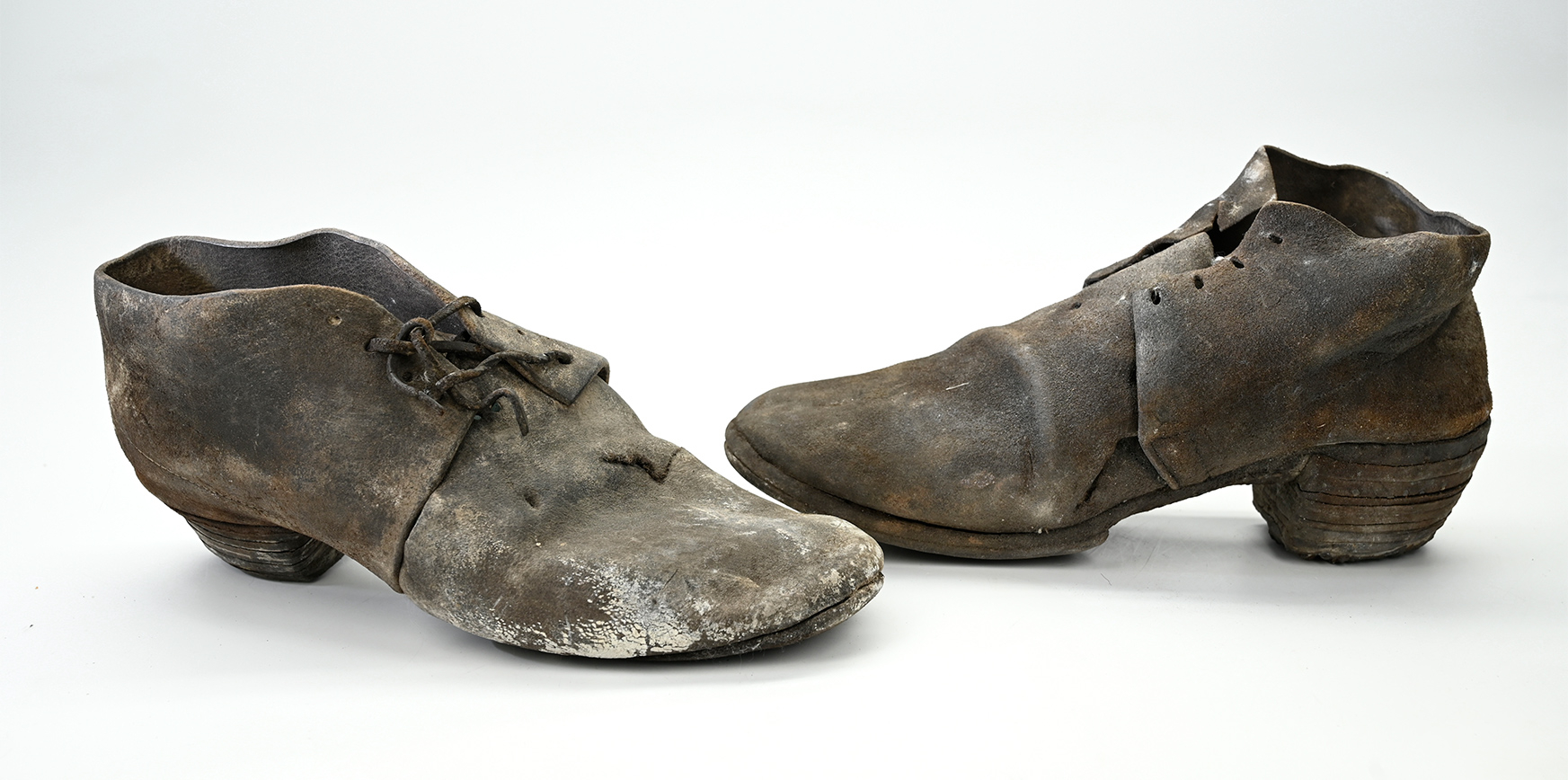
Hover to zoom

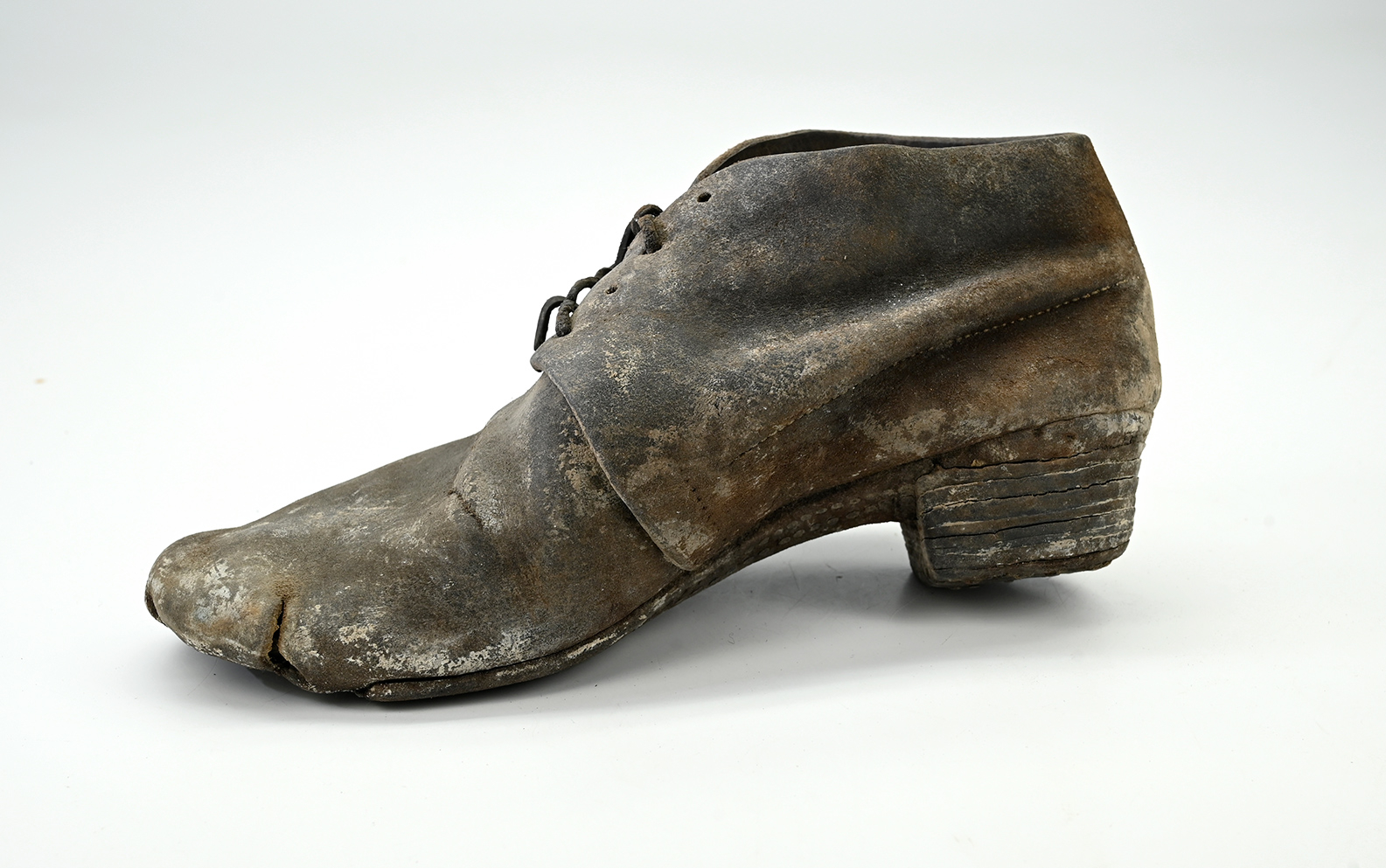
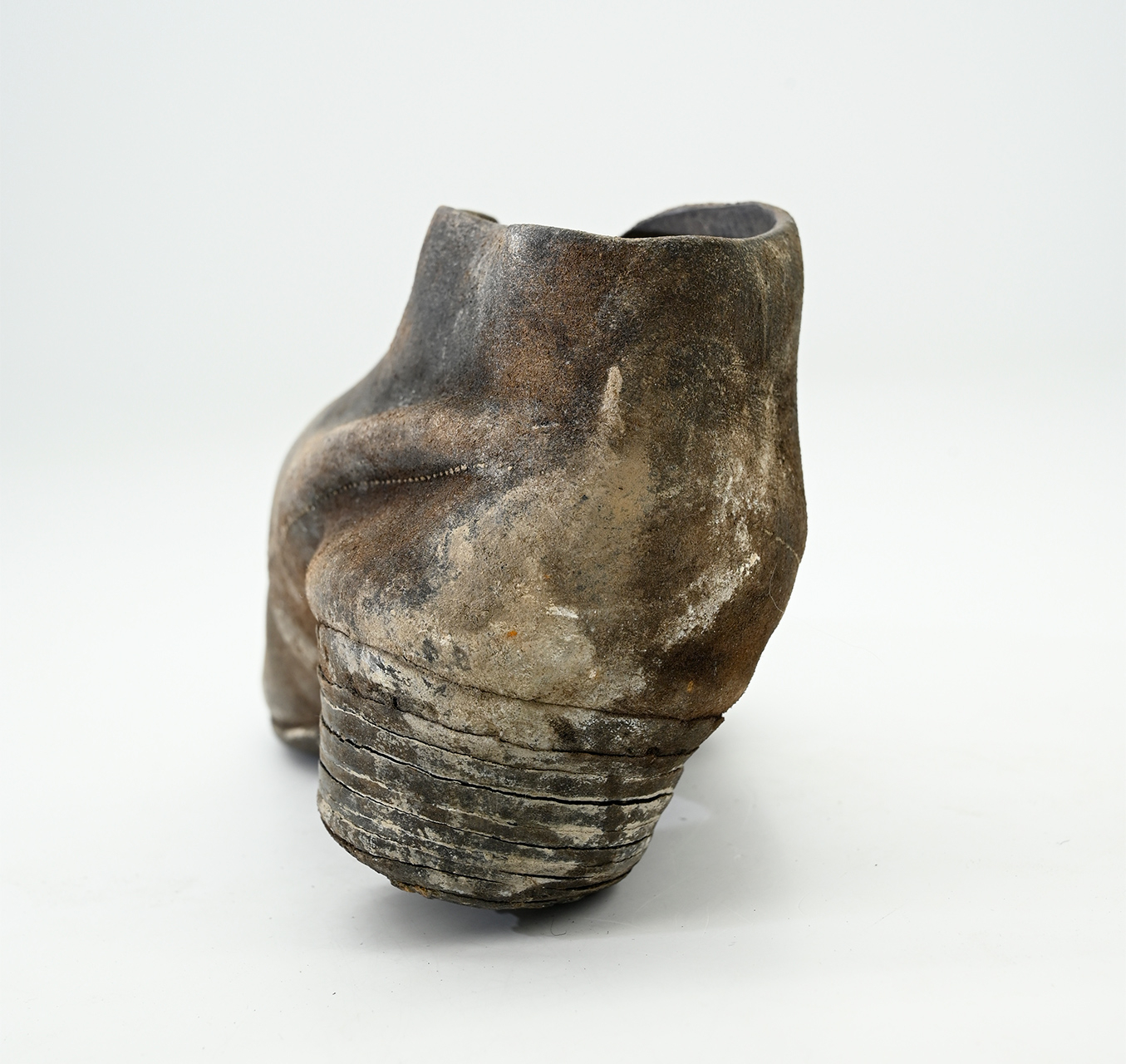
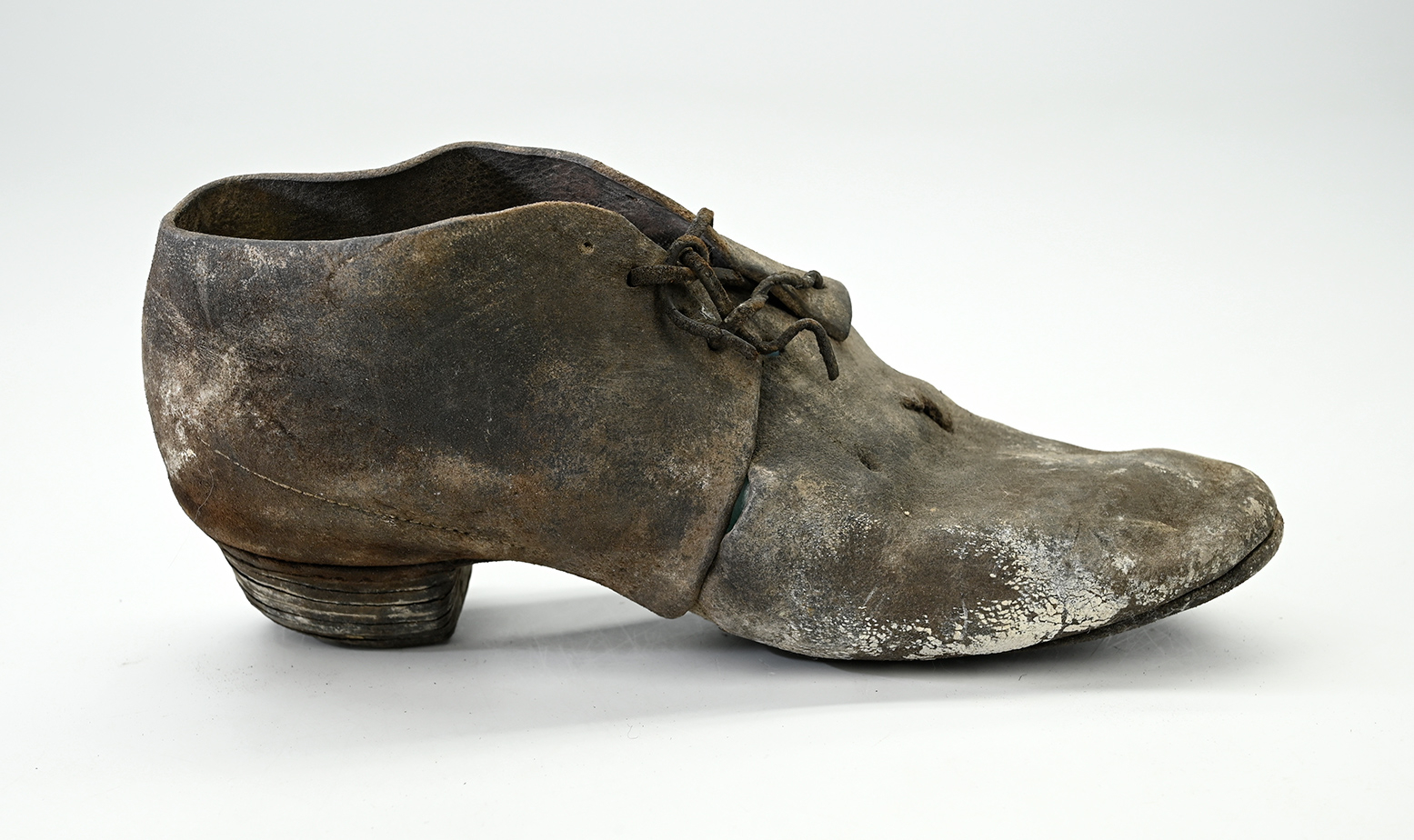
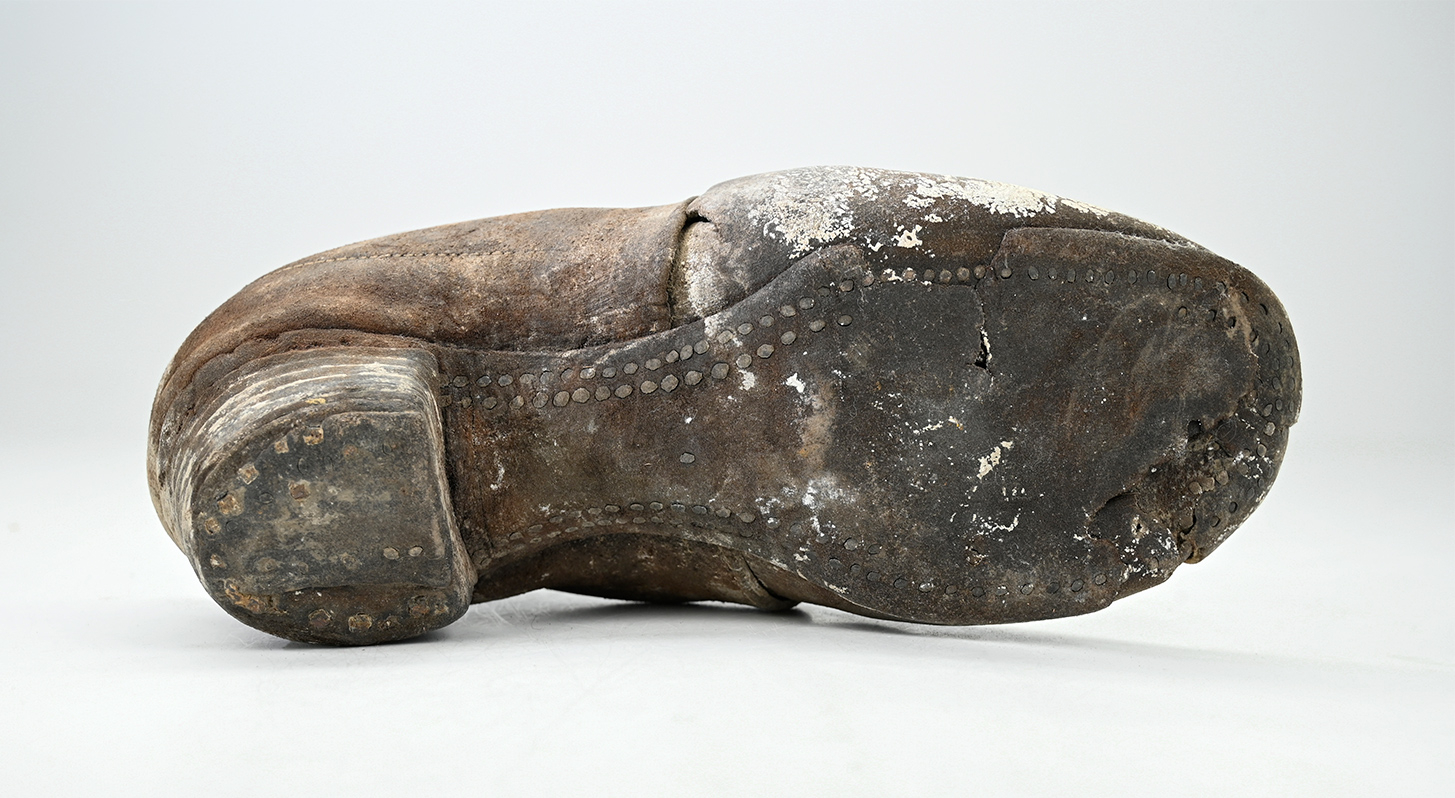
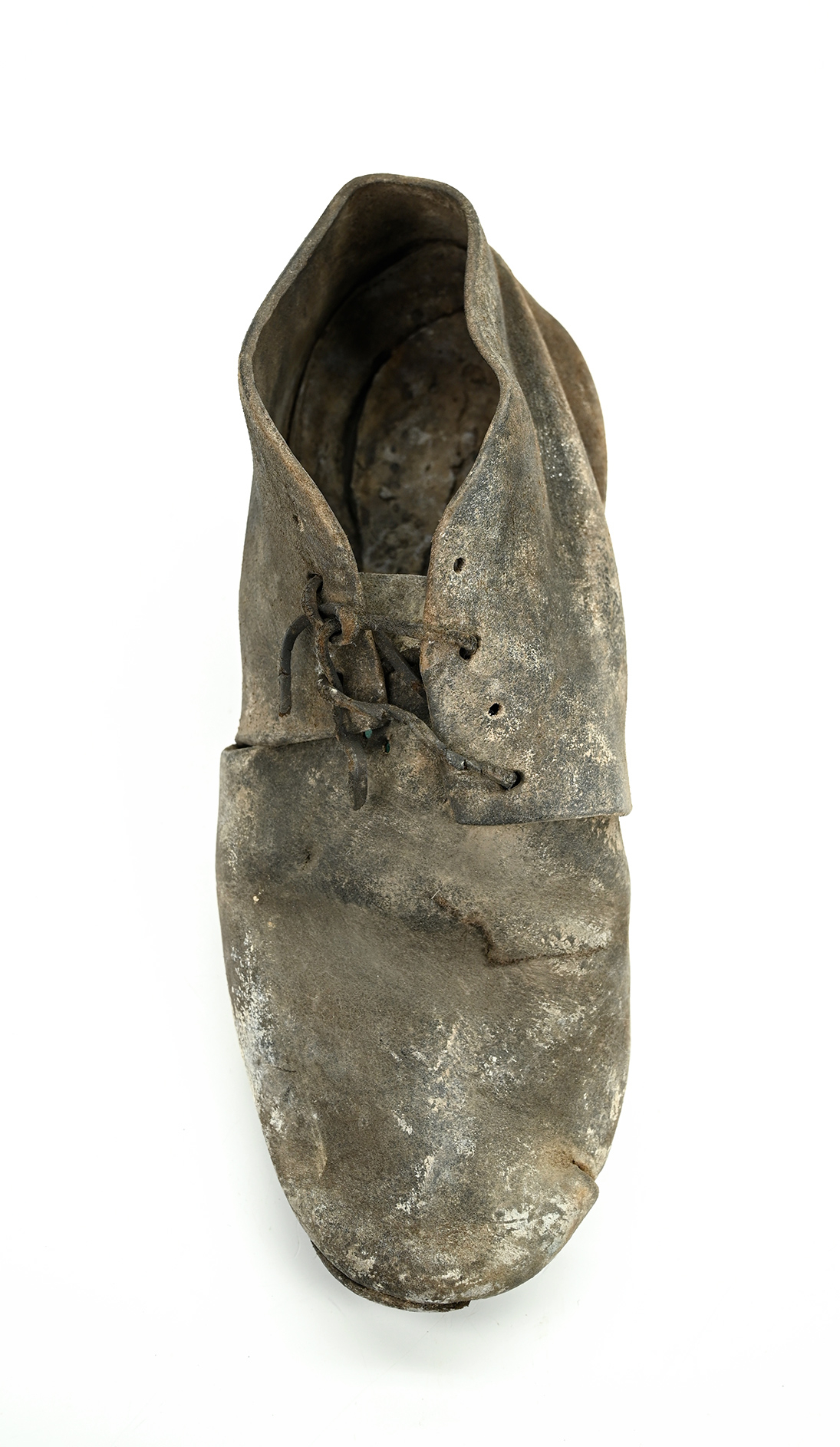
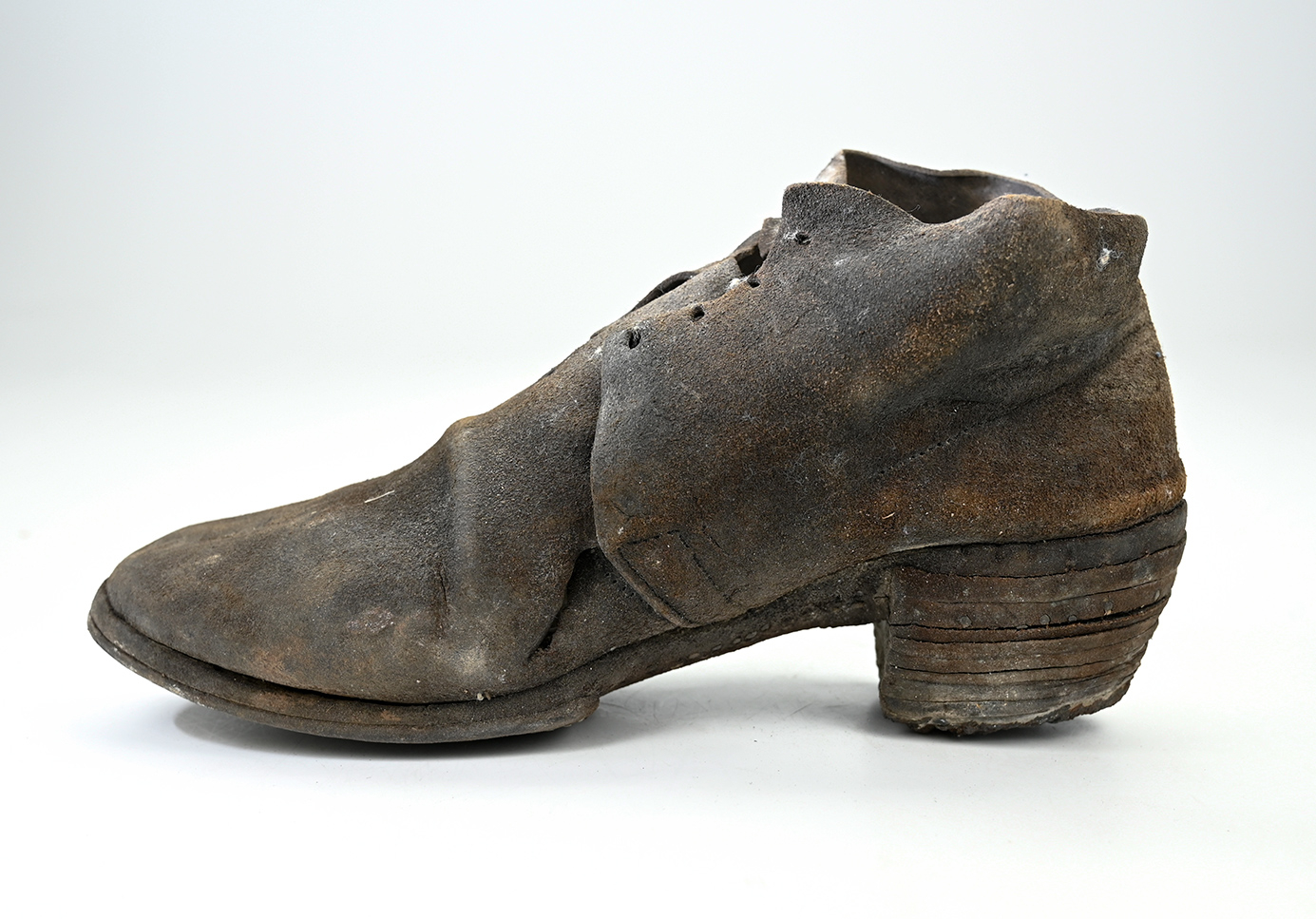
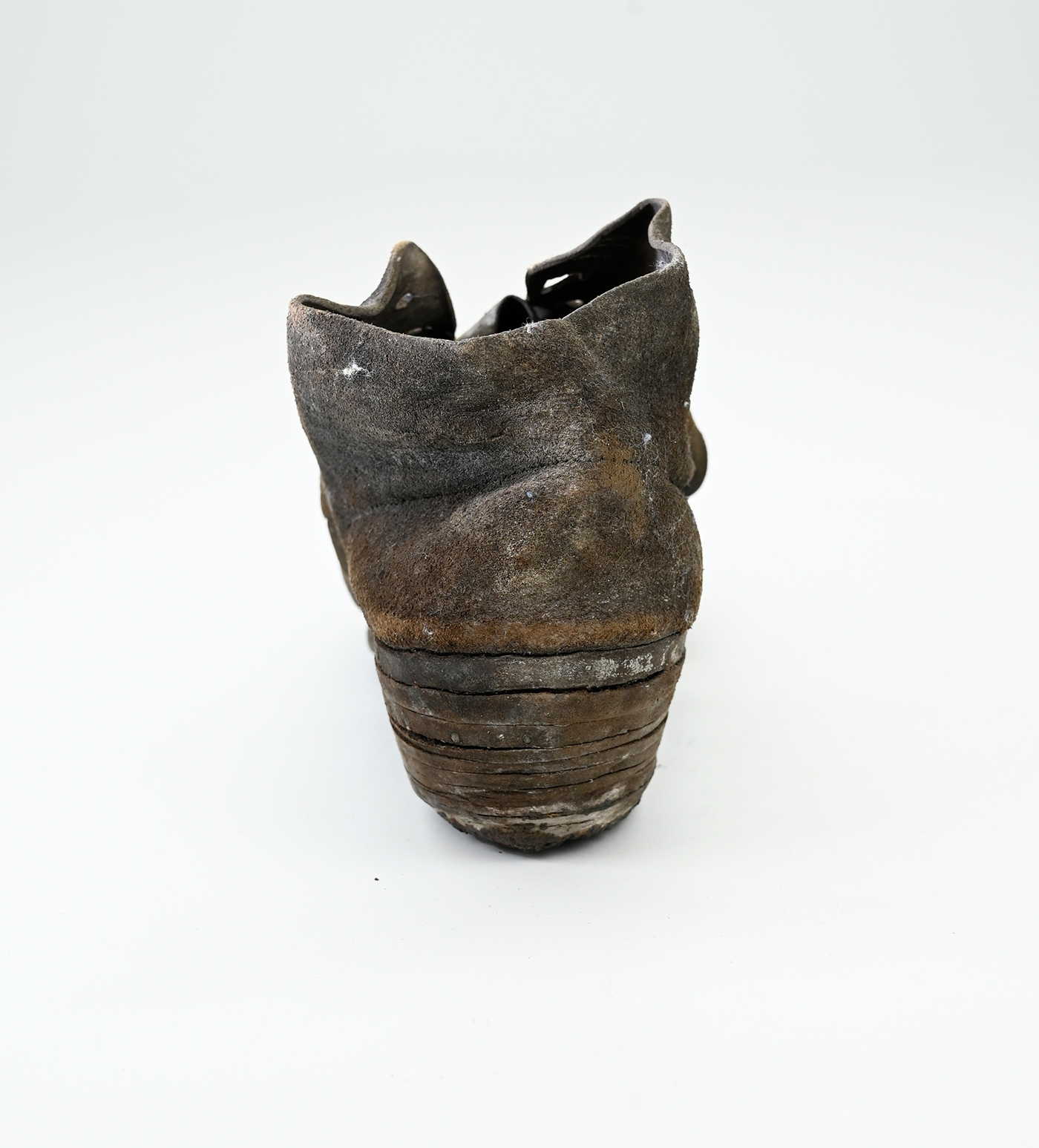
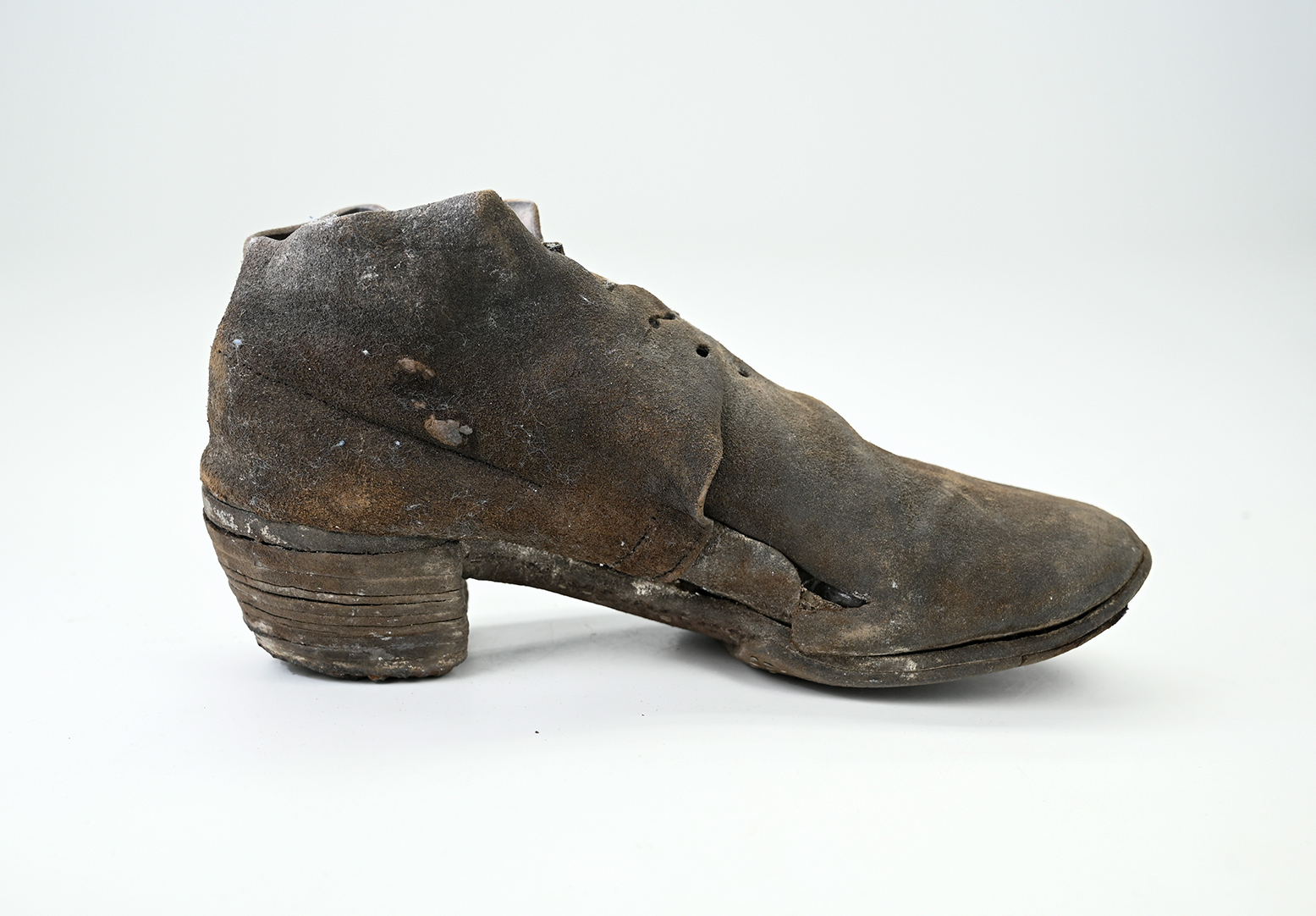
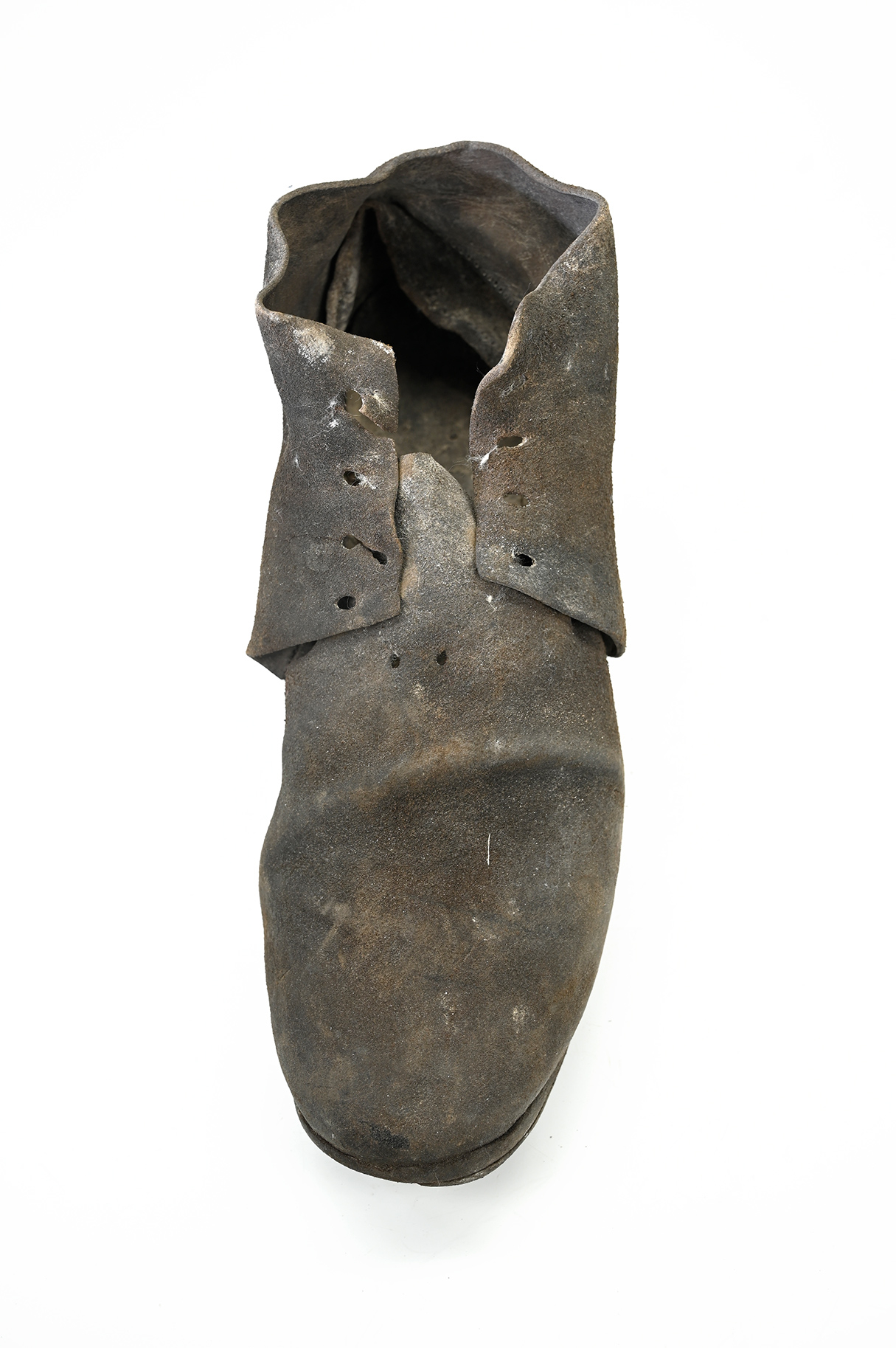
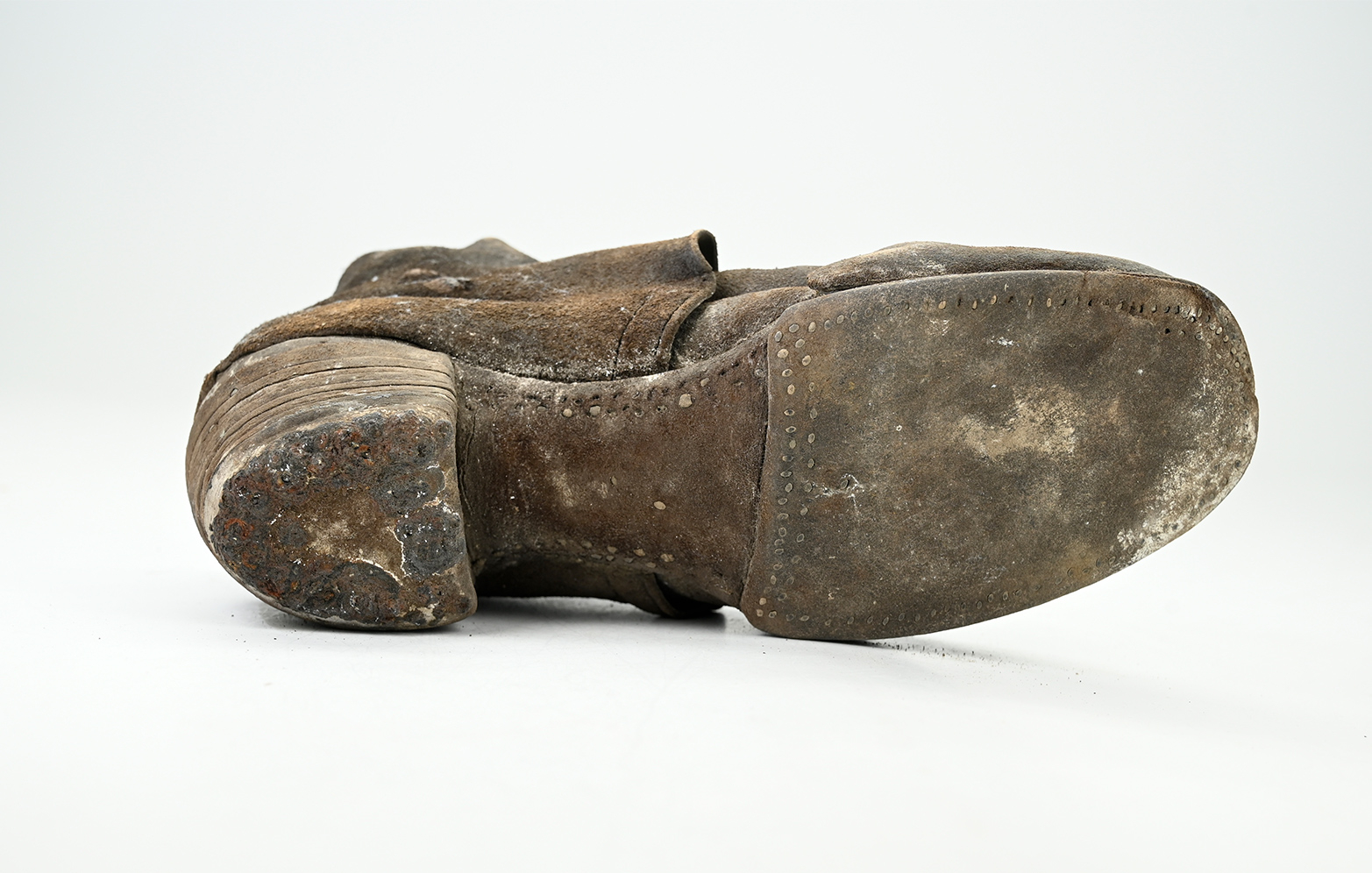
$795.00 SOLD
Quantity Available: None
Item Code: 1052-389
This pair of soldier’s shoes is from Fort Pembina, ND, a small U.S. army post from 1870 to 1895, and is typical army construction using rough-side out black leather and is clearly stamped “J.MU…” inside the right shoe at the right ankle, certainly the mark of John Mundell, a well known shoe manufacturer and army contractor for shoes in the Civil War and later, furnishing the early versions of the M1872 pattern field shoes with brass screwed soles.
These come from the excavations at Fort Pembina, ND, and could be taken for attic or barn-finds, having been preserved by the wet, anaerobic soil conditions of the dig. They are solid, can be handled, and display very well, showing as a dusty brown with some white stains. As was the case with the rest of the postwar army, the garrison at Fort Pembina had Civil War surplus uniforms and gear well into the 1870s but would draw new patterns as they were adopted and became items of issue. These have Civil War characteristics in the overall pattern using rough-side-out leather, black in color, oxidizing toward brown, with the uppers consisting of typical vamp and quarters with sewn counter inside, and a pegged sole. There are four lacing holes on either side and two on the lower tongue. Part of the original leather thong/lace is present on one. The rounded toe of the shoes, the narrow width of the soles at the instep, and the rather high heels remind us of the later issue barrack or camp shoes, rather than field shoes, but those later camp or barracks shoes were quite different. It may be that Mundell submitted earlier examples for government trial or, perhaps more likely, these are commercially produced shoes aimed at soldiers who might want something more comfortable than army issue shoes for wear in garrison, camp or barracks, but which might pass for government issue on casual inspection, and be much more comfortable. That seems especially likely since inspection reports of the early frontier army are filled with notes on the wide variety of footgear worn both on campaign and in garrison. See McChristian’s volumes on uniforms and gear of the frontier army in the 1870s and 1880-1892 for details and how the army responded or, in the early years, did not respond.
John Mundell was born in Ireland and settled in Philadelphia in 1847, going into the shoe trade. A short biography states,
“He soon secured work at the Government shoe factory in the Schuylkill Arsenal, and, within a year after he had arrived in Philadelphia in want, he entered upon business as a shoemaker on his own account . He was successful in his modest venture, and in 1855 began the manufacturing, with the Joseph H. Thompson Company, of a special shoe for the Southern trade, and when the Civil War came the firm had ten thousand dollars' worth of these goods on hand. With what money he could raise on this stock he bid for and secured contracts for army shoes, his first order being for four thousand pairs, followed soon after by another for twenty thousand pairs. In 1863 the introduction of a new machine in the business and a strike of Philadelphia shoemakers were the causes of many contracts going to New England manufacturers; but Mr. Mundell continued making his high-grade shoes and filled his contracts with regularity , and at the close of the conflict he was highly complimented by the Inspector-General with having furnished the best shoes that were supplied to the army.
In 1870 was formed the present firm of John Mundell & Company. In 1872 the firm, at the request of the Government, made what was termed the “Standard” boot and shoe, the soles being fastened by brass screws instead of being sewed. These were sent to troops on the Western outposts that they might be tested by the roughest service, and the reports all spoke so favorably of them that they were adopted as the regulation shoe . . . “
Fort Pembina was situated in the Red River Valley in North Dakota near the Canadian border, established in 1870 and in operation until 1895. Trading posts existed earlier in the area as part of the fur trade, and the first U.S. military post there was temporary- manned by a detachment of Minnesota troops in 1863-1864 following the 1862 Sioux uprising. In March 1870 a new fort was established south of the Pembina River and about 200 yards west of the Red River, completed by July and named in honor of Gen. George H. Thomas. The name was changed to Fort Pembina in September and the initial garrison consisted of two companies of the 20th US Infantry and excavations show that, as is typical of the early Indian Wars regular army, their uniforms and gear were a mix of Civil War surplus issue, private purchase material, and later army issue patterns and private purchases as time went on. Their main duty was to provide security for settlers worried about Sioux returning south from Canada, but the troops were more occupied with escorting boundary surveys along the Canadian border and preventing Fenian raids heading north into Canada.
The fort included enlistedmen’s barracks, officers’ quarters, guard house, ordnance storehouse, company kitchen, root house, laundress’s quarters, quarters for civilian employees, hospital and hospital servant’s house, a barn for the “hospital cow,” quartermaster and commissary offices and storehouse, stables, wagon shed, etc. The garrison reached peak strength in 1878 af 200, but the average was about 125 enlisted men and 8 officers. An October 1885 return listed 97 men, 2 field pieces, 1 mountain howitzer, 100 rifles, 19 pistols, 23 mules, and 9 wagons. By 1890 the post had just 23 men, and after an 1895 fire destroyed some 19 buildings it was decided to abandon the fort rather than rebuild, the last detachment left in September. The property was turned over to the Interior Department and later sold in 1902.
This is a very interesting set of army footwear marked by a maker with well-established military connections and with a tight provenance to a small, postwar, US army frontier fort. [sr] [ph:m]
~~~~~~~~~~~~~~~~~~~~~~~~~~~~~~~~~~~
THIS ITEM, AS WITH ALL OTHER ITEMS AVAILABLE ON OUR WEB SITE,
MAY BE PURCHASED THROUGH OUR LAYAWAY PROGRAM.
CLICK HERE FOR OUR POLICIES AND TERMS.
THANK YOU!
Inquire About PAIR OF EARLY BARRACKS OR CAMP SHOES BY JOHN MUNDELL OF PHILADELPHIA
Most Popular
Historical Firearms Stolen From The National Civil War Museum In Harrisburg, Pa »
Theft From Gravesite Of Gen. John Reynolds »
Selection Of Unframed Prints By Don Troiani »
Fine Condition Brass Infantry Bugle Insignia »
featured item
A CONFEDERATE ARTILLERY OFFICER'S FROCK COAT AND TROUSERS – JOHN CHEVES HASKELL, SOUTH CAROLINA
Here for your consideration are uniform pieces of lieutenant to major to lieutenant-colonel John Cheves Haskell of South Carolina. We will break the offering into his history, his frock coat, and his trousers. HASKELL'S HISTORY: Born in 1841 he… (1268-559). Learn More »


